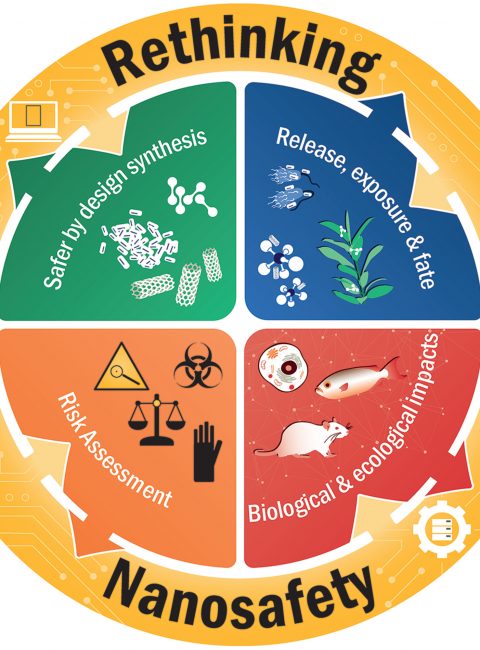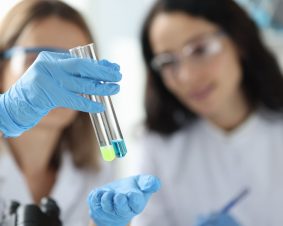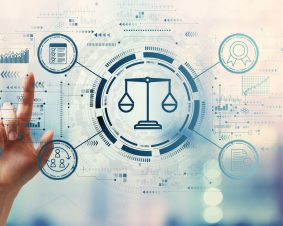 >
Spotlight Juli 2020: “Nanosafety – More than just regulatory processes”
>
Spotlight Juli 2020: “Nanosafety – More than just regulatory processes”
Nanosafety is more than just a compulsory aspect of nanomaterials research and regulation. This research area also has great potential to drive new innovations. It is exactly this perspective that is addressed in the special issue “Rethinking Nanosafety: Harnessing Progress and Driving Innovation” by Chen et al. 2020.
The article illustrates that especially in the field of biology and nanomedicine, safety assessment can contribute to a more fundamental mechanistic understanding of the interaction between nanomaterials and living systems. Innovations based on this can range from personalised nanomedicine to tailor-made nanomaterials for the agricultural industry. In addition, the development of advanced cell and tissue models could further advance the understanding of so-called “adverse outcome pathways” (AOPs) as well as their development and validation.
The Special issue Rethinking Nanosafety brings together more than 50 research projects of renowned scientists in the field of nanosafety and reflects the cooperative and future-oriented character of this research area. The first part of this special issue was published in Small in May 2020. The publication of the second part will follow in July 2020.
Original Publication:
Chen, C., Leong, D.T. and Lynch, I. (2020), Rethinking Nanosafety: Harnessing Progress and Driving Innovation. Small, 16: 2002503. DOI:10.1002/smll.202002503

Weitere Spotlights
Spotlight September 2023: Fishing for raw materials with proteins
The so-called rare earth elements such as neodymium, dysprosium or cerium are elements that are of great importance for the energy transition; among others they serve as components of magnets in generators for electric power generation, act as luminescent materials in energy-saving lamps or as part of the car exhaust catalytic converter. The global production […]
Read moreSpotlight October 2020: Nanosafety – Topic of the Future
Research on nanosafety is a driver of innovation as the spotlight in July has demonstrated. But furthermore, this research field is built on routine as well if researchers look for the “needle in the haystack”. In many areas the safety research initiates the development of new methods, e.g. for the determination of nanoparticles within exposed organisms via […]
Read moreSpotlight July 2022: New definition on nanomaterials published
The European Union has published a new definition for nanomaterials as of June 2022. It is recommended that this be used as a basis for future legislation. The new documents can be found on the EC website. In the new “nanodefinition”, the essential components such as the origin or the size range of the particles […]
Read moreSpotlight September 2020: Groundwater remediation with Carbo-Iron® – Risk or Benefit?
In September we would like to present a paper of the BMBF project Fe-Nanosit. The project dealt with the use of iron-containing nanomaterials in groundwater and wastewater remediation. A comprehensive assessment and weighing of benefits and possible environmental risks resulting from the application is now presented by the project partners in this paper. Groundwater is indispensable for the […]
Read more


